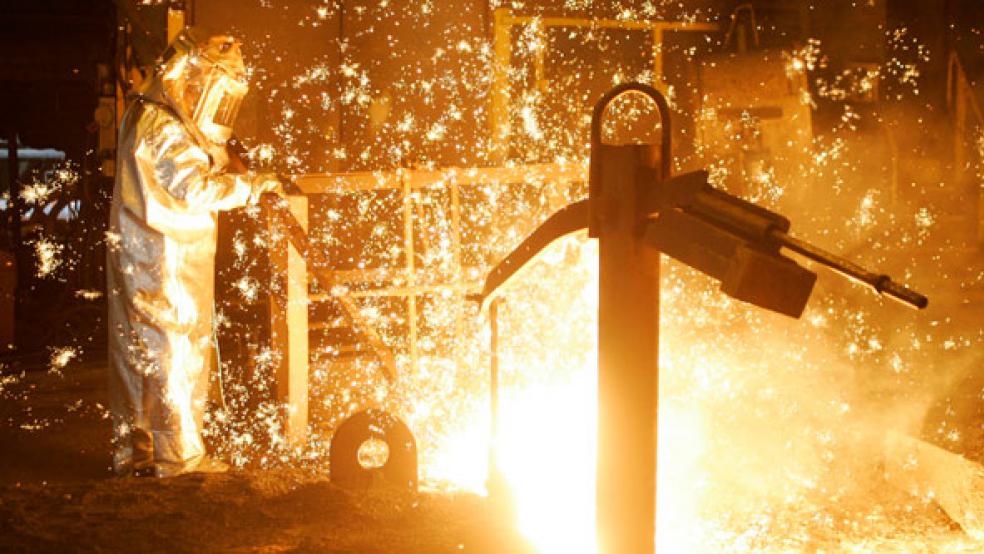For three years, we really have not had a clear idea of Barack Obama’s economic philosophy. Contrary to his Republican critics, he is not a socialist or a mindless big spender and regulator, but neither is he a pure free market kind of guy. In recent months, we have started to get an idea of what Obama actually is: a believer in what used to be called “industrial policy.” In particular, he believes that manufacturing is something special and deserving of explicit government support.
This is not a new idea. In the 1980s, industrial policy or reindustrialization was the Democrats’ response to supply-side economics, which underlay Ronald Reagan’s economic program. Much of the Democrats’ argument was based on the idea that industrial policy was the reason for Japan’s fabulous postwar economic success, which was then at its pinnacle.
RELATED: 7 Positive Ways to Secure Our Economic Future
Industrial policy advocates argued that Japan showed that pure free market policies don’t work, that government must actively intervene to humanely kill off dying industries and provide targeted support to cutting edge industries. Japan’s powerful Ministry of International Trade and Industry (MITI) was the central agency that managed this process with high-skilled bureaucrats utilizing a toolbox of trade restrictions, subsidies, regulations, and economic espionage.
American businesses were said to be at a disadvantage and there were lots of best-selling books in the 1980s predicting that Japan would soon eclipse America as the world’s economic super power. There was even a silly Hollywood film, “Rising Sun,” that carried the idea of a Japanese conspiracy to rule the world to a ridiculous extreme.
Even among Republicans there was admiration for the Japanese model. During the George H.W. Bush administration, where I worked in the Treasury Department, it had strong supporters at the Commerce and Defense departments. One of the key battlegrounds was high-definition television (HDTV), which was just in its infancy. Commerce was very keen to support American manufacturers of HD televisions and DOD agreed in order to support the American semiconductor industry. (Semiconductors are a major component of HDTV.)
Treasury, along with the Council of Economic Advisers, took the free market view. We were concerned that whichever technology the government chose to support would become dominant and potentially foreclose superior alternatives. We also doubted that American bureaucrats knew enough about HDTV to act as venture capitalists. In the end, we succeeded in derailing the initiative.
Years later, one of the people at Commerce who supported subsidies for HDTV admitted to me that the technology that it wanted to support turned out to be inferior to that which ended up being the standard. It also turned out that the real money was not to be made manufacturing HDTV’s, but in producing the programming, an area where the U.S. remains dominant.
During the tech boom of the 1990s, support for industrial policy died out. It became obvious to everyone that government lacked the expertise to do it competently even if it was a good idea in theory. At the same time, Japan entered into a long era of decline that continues to the present day. No one talks any more about emulating the Japanese model. Today, the China model is all the rage.
To the Obama administration, the key to China’s extraordinary success is its heavy reliance on manufacturing. At the same time, the decline of manufacturing in the U.S. is viewed as a central factor in slow economic growth, high unemployment, and rising income inequality. Manufacturing, it is said, was the place where workers without college educations could make a good living and raise a family in a solid middle class lifestyle. Therefore, reviving manufacturing is the key to reviving the middle class.
There were hints of Obama’s focus on manufacturing in his support for the auto industry early in his administration, which involved billions of dollars of taxpayer bailouts. While the government subsidies remain controversial, there is no question that the U.S. auto industry has dramatically revived. Yesterday, General Motors announced its largest profit in history, just two years after it almost ceased to exist.
Late last year, Obama’s Jobs Council issued a report that extolled the virtues of manufacturing and recommended further government support. In January, the Commerce Department published a detailed study that placed manufacturing in a central position in the economy. And in Obama’s 2013 budget, there is a chapter defending the auto bailout and proposing additional measures targeting the manufacturing sector. These include tax, trade and other initiatives.
Ironically, this pro-manufacturing thrust is taking place at exactly the moment when fundamentals appear to be working in favor of American manufacturing. In August, the Boston Consulting Group published a report forecasting a revival of American manufacturing based on rising costs for Chinese manufacturers that are rapidly eroding their advantage. In January, the consulting company PWC published a study that also saw a manufacturing renaissance due to the boom in natural gas production, upon which much manufacturing is dependent.
There is even evidence of “insourcing,” with manufacturers that had previously left the U.S. for lower costs in China bringing back jobs and production to the U.S. According to a February 14 Reuters report, companies like Boeing and General Electric cite the overextension of their supply chains and the superior quality of the American workforce for their actions.
In the near term, Obama’s pro-manufacturing strategy may well pay political dividends. The economy finally seems to be on a sustainable upward course and the manufacturing sector, which bore much of the brunt of the recession, will undoubtedly see a nice bounce. But it is doubtful that Congress is going to enact any of Obama’s initiatives this year, which appear designed more for the campaign trail than enactment anyway.
However, if he is re-elected there may be a serious debate next year on whether manufacturing has a special place in the American economy, and if so whether federal policies can or should target it for special treatment. That is the essence of Obamanomics.






